Qilian Mountain National Nature Reserve
Qilian Mountain National Nature Reserve
Gansu Qilian Mountain National Nature Reserve is located at the northern foot of Qilian Mountain in the intersection zone of Qinghai-Tibet, Mongolia-Xinhua and Loess plateau. It belongs to the nature reserve of forest ecosystem type. The reserve is a nature reserve of forest ecosystem type, with a total area of 2.653 million hectares, and is protected by Picea crassifolia, Cypress chinensis, Crane and other organisms.
Historical evolution
On October 15, 1986, the Gansu Provincial People's Government asked the former Ministry of Forestry to divide the Qilian Mountain Reserve into national nature reserves.
On October 24, 1987, Gansu Provincial People's Government approved Qilian Mountain Nature Reserve as a provincial nature reserve.
On May 9, 1988, the State Council issued the Circular on the Publication of the Second National Forest and Wildlife Type Nature Reserves, marking that Qilian Mountain Nature Reserve has become one of the National Forest and wildlife type nature reserves.
On April 25, 1990, Gansu Forestry Department approved the natural protection stations of the units affiliated to Qilian Mountain National Nature Reserve (21 such as Gucheng, Dongda River, Xiying River, Dongdashan and Changling Mountain Nature Reserve name unchanged).
On February 3, 1992, Gansu Forestry Department approved the establishment of Shandanlong Shoushan Nature Conservation Station, which is under the unified management of Qilian Mountain Conservation Bureau.
On December 24, 2002, Gansu Provincial Forestry Department approved the reply of Dongdashan, Longshou Mountain and Changling Mountain Nature Reserve plus the signboards of Dongdashan, Longshou Mountain and Changling Mountain Nature Reserve in Qilian Mountain National Nature Reserve of Gansu Province.
On December 19, 2017, the government of Gulang County in Gansu Province learned that, in accordance with the state's requirements for the improvement and renovation of the ecological environment protection of Qilian Mountain National Nature Reserve (Gulang Section), 14 problems in seven aspects identified by the Ministry of Environmental Protection through remote sensing monitoring and local self-examination had been completed a few days ago, and had passed county-level acceptance and municipal-level review and acceptance.
geographical environment
position
Gansu Qilian Mountain National Nature Reserve is located in the north foot of Qilian Mountain, which is the intersection zone of Qinghai-Tibet, Mongolia-Xinhua and Loess plateau. It is located in the middle and eastern section of the northern slope of Qilian Mountain in Gansu Province.
Geology and geomorphology
The western part of Qilian Mountains consists of a series of mountains and wide valley basins such as Nanshan, Heihe Valley, Tolai Mountain, Tolai Valley, Tolenan Mountain, Shule Valley, Shule Nanshan, Hala Lake Basin, Danghan Mountain, Kaktugol Valley, Saishten Mountain, Qaidam Mountain and Zongwulong Mountain. In the eastern part of Qilian Mountains, there are Lenglong Mountains, Datong Valley, Datong Mountains and Dabanshan Mountains. In a series of parallel mountainous areas, the north and south sides and the East are relatively undulating. Intermountain basins and wide valleys are generally between 3000 and 4000 meters above sea level, and the valleys are relatively wide. Flood, alluvial plains or platforms on both sides are developed. The wide valley basin where the source of the five rivers, Beidahe, Heihe, Shule, Datong and Buha, lies to the east of Shule Nanshan, has an elevation of 4100-4200 meters. Modern glaciers are developed in the high mountains of Qilian Mountains at altitudes of 4500-5000 meters, and there are abundant types of modern glaciers and paleoglaciation. Because the lower boundary elevation of perennial glacial soils in Qilian Mountains is generally between 3500 and 3700 meters, most mountain areas and the upper reaches of some rivers have developed periglacial landforms. Among the geomorphic processes below the permafrost zone, the runoff is dominant in the East and the aeolian effect is obvious in the west.
climate
Qilian Mountain National Nature Reserve belongs to continental alpine and semi-humid mountain climate. It is characterized by long and cold and dry winter, short and warm and humid summer. The annual precipitation mainly concentrates in May-September. The area is from shallow mountain zone to deep mountain zone. Temperature decreases, rainfall increases, cold and humid alpine zone, hot and dry shallow mountain zone. With the increase of altitude in mountain areas, the climatic factors change regularly from bottom to top, showing a clear vertical climatic zone in mountain areas. From bottom to top are: shallow mountain desert steppe climate zone, shallow mountain steppe climate zone, mountain forest steppe climate zone, sub-alpine shrub meadow climate zone, alpine snow vegetation climate zone.
Regional scope
Qilian Mountain National Nature Reserve covers a total area of 2.653 million hectares, ranging from 97 25'- 103 46', and 36 43'- 39 36'. Among them, the core area is 802261.6 hectares. Qilian Mountain National Nature Reserve covers 8 counties (districts) of Liangzhou, Tianzhu Tibetan Autonomous County, Gulang, Yongchang, Ganzhou, Shandan, Minle and Sunan Yugur Autonomous County in Wuwei, Jinchang and Zhangye. The buffer area is 470 625.2 hectares and the experimental area is 1380 136.2 hectares.
Protection target
Protected object
Qilian Mountain National Nature Reserve takes Picea crassifolia, Sabina cypress and Crane as its protected objects.
Botany
Caragana gigas is a spiny dwarf shrub of Caragana leguminosa, standing or lying horizontally, 1-3 meters high. Basal branches, bark dark gray or black.
Rhodiola tangutorum belongs to Rhodiola of Sedum family, with plant height of 5-25 cm. Rhizomes are stout and lignified. Flower stems are mostly clustered, base with most dead stems, lower lying, upper erect. Leaves slender linear, not more than 1 mm wide. The petals of stamens and stamens are equal or slightly longer than those of males; the carpels of females are about twice as long as those of females.
Stellate hairy chrysanthemum, nicknamed Fudi hairy chrysanthemum, belongs to the genus Trichosanthemum, annual or biennial herbs, almost stemless. Leaves numerous, densely stellate lotus-shaped, herbaceous, striped, 6-19 cm long, 5-15 mm wide.
Animal
Crane is a national second-class key protected animal. Slightly smaller (about 105 centimeters) and elegant blue-gray cranes. The white, white filamentous feathers on the top of the head are contrasted with the black head, neck and slender chest feathers. Triple flying feathers are long but not dense enough to cover the tail.
The curly-feathered Pelican belongs to the second-class national key protected animal. A large (about 175 cm) pelican. The body is gray, the eyes are yellowish, and the throat pouch is orange or yellow. They like to live in groups and hunt fish.
White pelican is a national second-class key protected animal. White pelican of very large size (about 160 cm). The body feathers are pink and only the primary and secondary feathers are brown and black. Like lakes and large rivers.
Grey crane, commonly known as the Balu geese, belongs to the second-class national key protected animals. Adult feathers are mostly grey. Both sexes are the same. Iris yellowish-brown; mouth black-gray, apex milky-yellow; bare part of tibia, tarsus (foot plus foot) and claw horny gray-black.
Swan with wart nose belongs to the second-class national key protected animal. It is about 150 centimeters in size. Overwintering birds flock in lakes or rivers.
Management organization
In 2006, Qilian Mountain National Nature Reserve administered Changling Mountain Protection Station, Dongda River Protection Station, Dahekou Protection Station, Dahuangshan Protection Station, Dongda Mountain Protection Station, Ancient City Protection Station, Haxi Protection Station, Hualong Protection Station, Kangle Protection Station, Longchang River Protection Station, Longshou Mountain Protection Station, Horseshoe Protection Station, Qifeng Protection Station, Qilian Protection Station, Balibao Protection Station. Protection stations, Shangfangsi Protection Station, Sidalong Protection Station, Forest Public Security Bureau, Wushaoling Protection Station, Xima Protection Station, Xishui Protection Station and Xiying River Protection Station have 23 protection stations.
Tourism
Manjusri Temple
Wenshu Temple is located in Qifeng Tibetan Township, Sunan Yugur Autonomous County, Gansu Province. It is a group of Buddhist grottoes. It was built in Beiliang period (401-433). The caves are excavated on the cliff walls of the front and back mountains of Manjusri Mountain according to the mountain situation, and are distributed in the range of 1.5 kilometers from north to South and 2.5 kilometers from east to west. There are more than 100 caves in existence, including 8 early central pillar caves, 1 Zen cave and 28 monastery sites in front of caves. Existing important caves include Qianshan Qianfo Cave, Wanfo Cave, Houshan Ancient Buddha Cave and Qianfo Cave, all of which are central pillar caves with dome and near square plane.
Leopard Head Forest Park
Leopard Head Forest Park is located in Dongdahe Nature Conservation Station, Yongchang County, Jinchang City, Gansu Province, 28 kilometers away from Yongchang County. Along the way, there are Lixuan site, clam spring, fried iron platform, Zhaoziwa and other cultural and natural attractions. There is a great difference in elevation between 2400 m and 3900 m, forming a forest landscape of mountain plateau, which integrates forest, grassland, glacier and other terrestrial ecosystems.
Horseshoe Temple
Horseshoe Temple is located in Sunan Yugur Autonomous County, 65 kilometers north of Zhangye City. The grottoes are composed of Shengguo Temple, Puguang Temple, Thousand Buddha Cave, Jinta Temple, Shang, Zhong and Xia Guanyin Cave. There are more than 70 cave niches, which were built in Beiliang. It is named for the legendary horse with horseshoe marks. The 33-day cave of Puguang Temple, with 21 caves on the upper and lower five floors, is arranged in pagoda shape. There are Buddhist halls inside and corridors outside. There are 49 caves inside and outside.
ecological value
In 1980, the State Council designated Qilian Mountain Water Conservation Forest as the national key water conservation forest area.
In 2000, the reserve was designated as the national natural forest protection project area.
In 2004, the protected forest was recognized as a national key ecological public welfare forest.
In 2008, in the National Ecological Function Zoning published by the Ministry of Environmental Protection, the Qilian Mountains were identified as water conservation ecological function zones, and the "Qilian Mountains Water Conservation Important Zone" was listed as one of the 50 important ecological service functional zones in China.
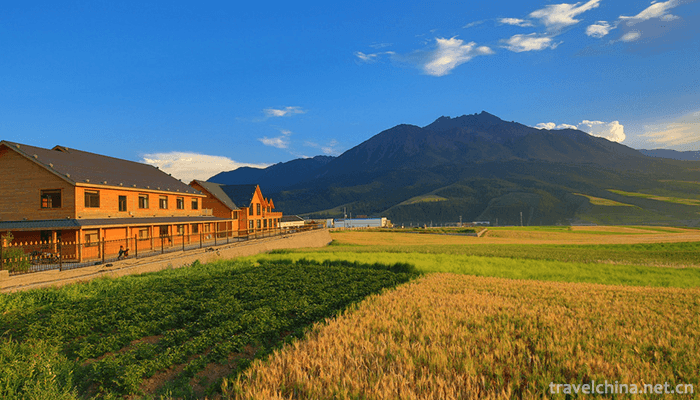
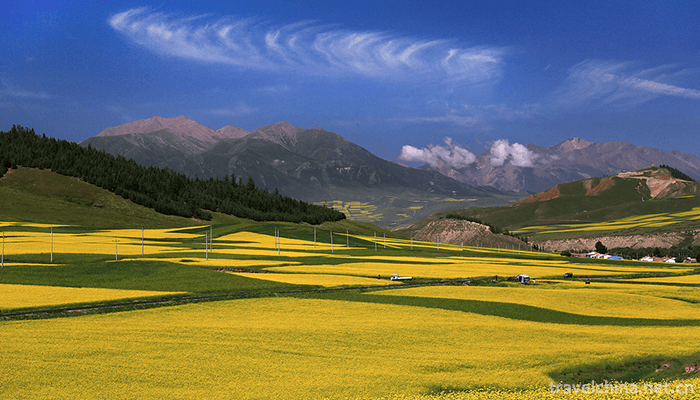
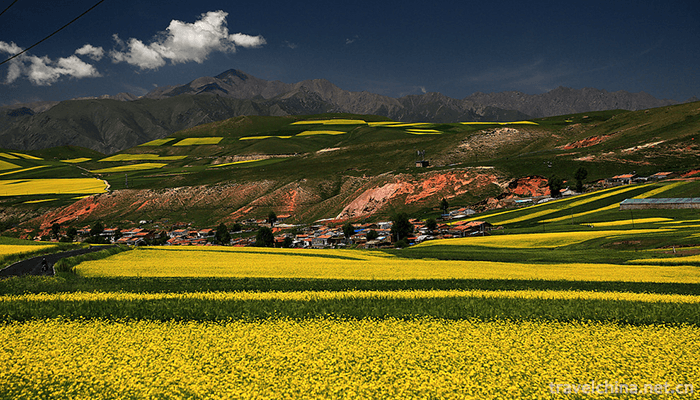



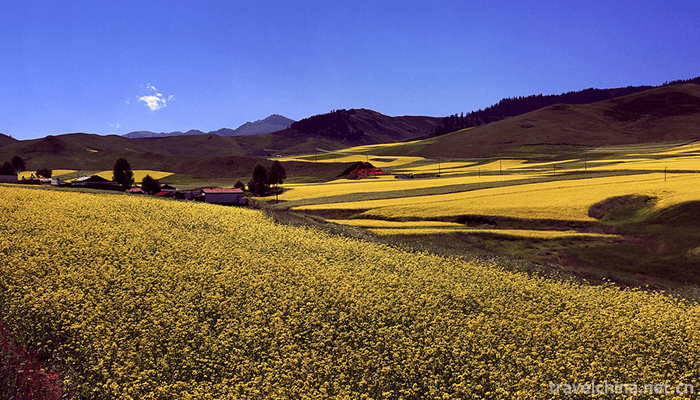
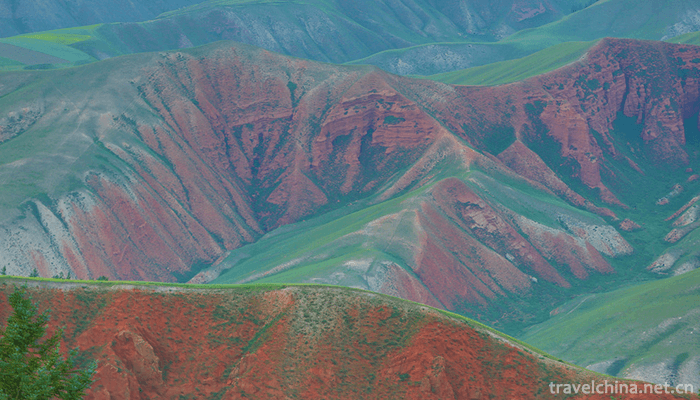
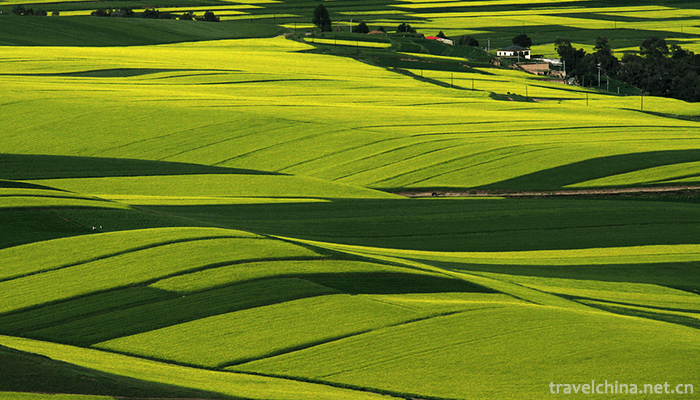
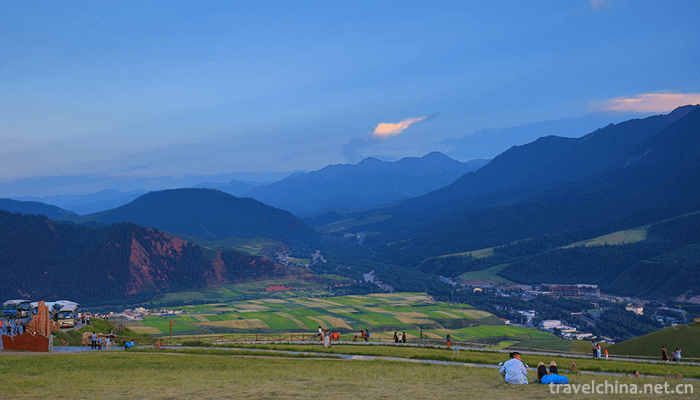
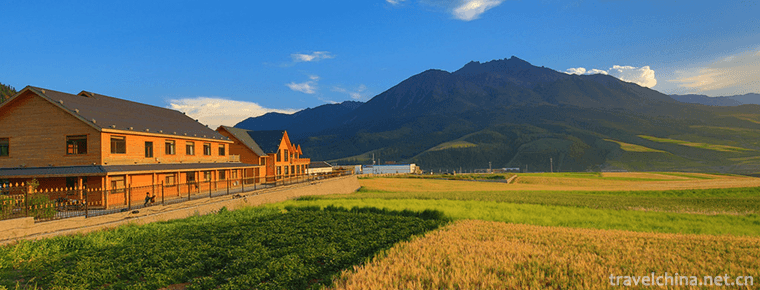
-
1.sanshui forest park
Sanshui Forest Park is located in the north suburb of the southwest town of Sanshui District, Foshan City, Guangdong Province.
Time 2018-12-18 -
2.Linzhou Taihang Grand Canyon Scenic Area
Taihang Grand Canyon Scenic Area is located in Linzhou City, northwest of Henan Province, on the eastern foot of the southern Taihang Mountains. It is 100 miles long in the north and south
Time 2019-01-30 -
3.Niulang and Zhinu Scenic Spot
Niulang Zhinu Scenic Area is located in Yanya Town, southeast of Yiyuan County, Shandong Province, 15 kilometers away from the county town. The scenic area is mainly composed of Daxianshan Mountain
Time 2019-02-07 -
4.Tiantai Hot Spring Resort
Tiantai Hot Spring Resort is located in Jimo Hot Spring Town. It has 27 holes of international championship grade Mountain Golf course. It is a large high-end rural resort centre integrating food
Time 2019-02-22 -
5.Zhenjiang Jinshan Temple
Jinshan Temple was built in Jinshan Mountain on the South Bank of the Yangtze River in Zhenjiang City, Jiangsu Province, at the time of Emperor Ming of the Eastern Jin Dynasty
Time 2019-03-18 -
6.Da Yu memorial ceremony
The Dayu Festival is an ancient Chinese traditional folk sacrificial activity. Dayuling is located in Huiji Mountain, southeast of Shaoxing City, Zhejiang Province. Dayu Mausoleum is the burial place
Time 2019-04-23 -
7.Dais Slow Wheel Pottery Technology
Dai Slow-wheel pottery, the primitive traditional handicraft of Yunnan, is one of the national intangible cultural heritages.
Time 2019-04-24 -
8.Dong embroidery
Dong embroidery is an important branch of Chinese minority embroidery, which uses a needle to puncture and attaches various colored silk or cotton threads to the surface of the fabric to form various
Time 2019-04-27 -
9.Fuxin agate carving
Fuxin agate carving, traditional art of Fuxin County, Liaoning Province, is one of the national intangible cultural heritage.
Time 2019-04-30 -
10.Huizhou three carving
The three carvings in Huizhou are a kind of local traditional carving art. They refer to three kinds of local traditional carving crafts, i.e. wood carving, stone carving and brick carving,
Time 2019-05-04 -
11.Production Techniques of Wufangzhai Zongzi
The traditional production techniques of Wufangzhai zongzi are mainly divided into 36 processes, such as material selection, rice dipping, leaf boiling, stuffing, shelling, wrapping, thread binding an
Time 2019-06-29 -
12.Bao Yugang
In early years, he entered Shanghai Zhongxing school. Wusong merchant shipping Academy 。 Drop out of school in 1937 Central Trust Bureau Hengyang office, deputy manager of Hengyang branch of China Ind
Time 2019-09-06